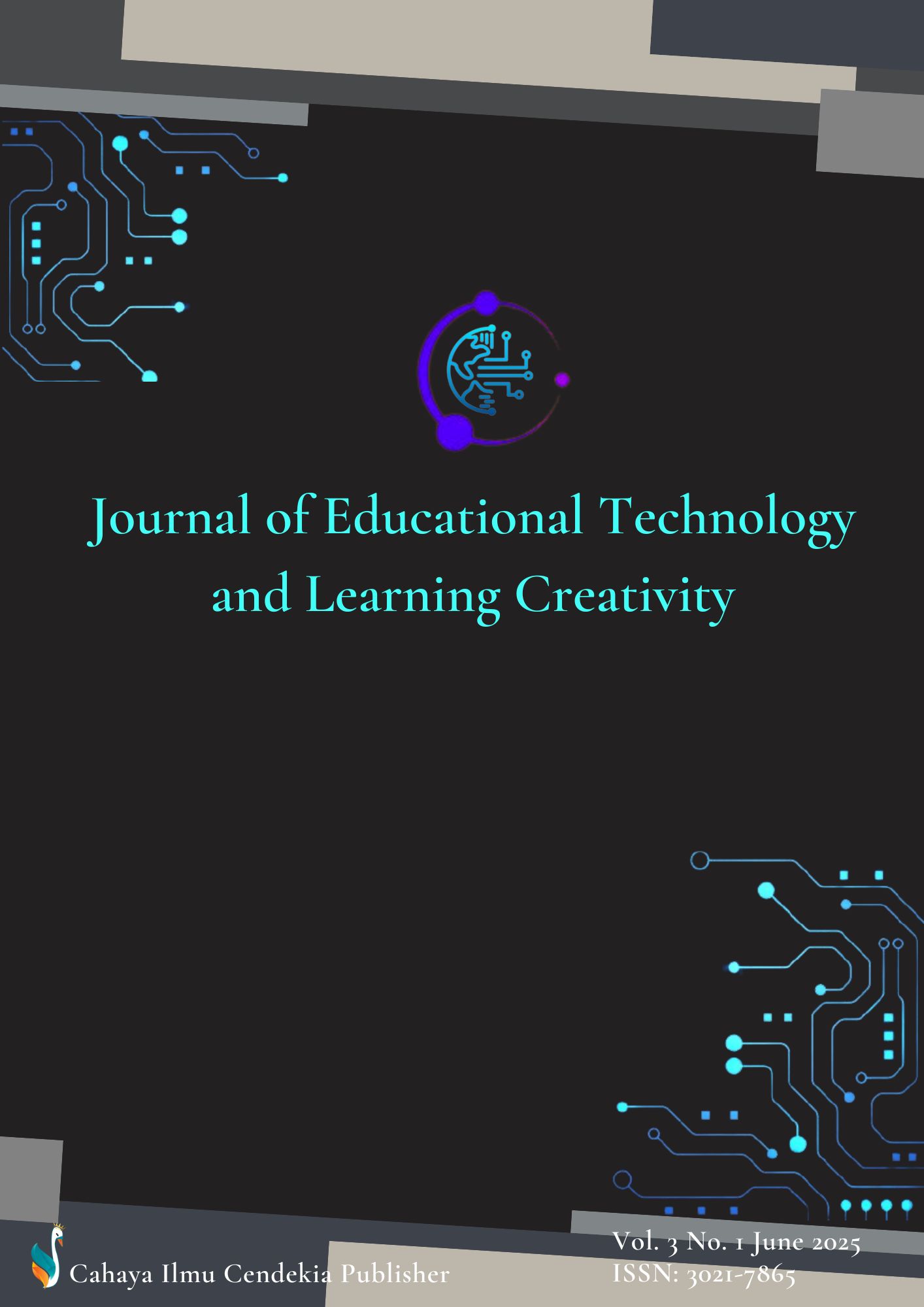Design and Experimental Study of a Biomass Pellet Gasifier Stove with Heat Recovery System for High Efficiency and Low Emission
Abstract
Purpose of the study: This study aims to design and test a gasifier-type biomass stove equipped with a heat exchanger system as an innovative effort to increase thermal efficiency and reduce CO emissions.
Methodology: The stove is designed with a special configuration by adding a heat exchanger to the gasifier system. It has dimensions of 700 mm in height, 400 mm in diameter, a combustion chamber height of 300 mm, combustion chamber diameter of 300 mm, an air inlet pipe diameter of 1.5 inches, an exhaust pipe diameter of 3 inches, and a heat exchanger length of 90 cm. Testing was conducted under cold start and hot start conditions, with variations in grate height (250 mm and 300 mm) and air-fuel ratios (0.9, 1.0, and 1.3).
Main Findings: The test results showed that the stove with a heat exchanger system was able to increase the average thermal efficiency to 35.76%, higher than the conventional biomass stove of 28.89%. The CO emissions produced ranged from 19 ppm to 51 ppm, depending on the variation of operation. The optimal conditions were obtained at a grate height configuration of 250 mm and an air-fuel ratio of 1.0 which produced the highest efficiency of 38.02% with CO emissions of 42.78 ppm.
Novelty/Originality of this study: The integration of a heat exchange system into a gasifier-type biomass stove has been shown to enhance thermal efficiency, significantly reduce CO emissions, and yield an optimal combination of parameters that are rarely addressed in previous studies.
References
M. Saleem, “Possibility of utilizing agriculture biomass as a renewable and sustainable future energy source,” Heliyon, vol. 8, no. 2, p. e08905, 2022, doi: 10.1016/j.heliyon.2022.e08905.
T. Kalak, “Potential Use of Industrial Biomass Waste as a Sustainable,” Energies, vol. 16, pp. 1–25, 2023.
J. L. Holechek, H. M. E. Geli, M. N. Sawalhah, and R. Valdez, “A global assessment: can renewable energy replace fossil fuels by 2050?,” Sustain., vol. 14, no. 8, pp. 1–22, 2022, doi: 10.3390/su14084792.
M. A. Destek, S. A. Sarkodie, and E. F. Asamoah, “Does biomass energy drive environmental sustainability? An SDG perspective for top five biomass consuming countries,” Biomass and Bioenergy, vol. 149, no. July 2020, p. 106076, 2021, doi: 10.1016/j.biombioe.2021.106076.
U. Shahzad, M. Elheddad, J. Swart, S. Ghosh, and B. Dogan, “The role of biomass energy consumption and economic complexity on environmental sustainability in G7 economies,” Bus. Strateg. Environ., vol. 32, no. 1, pp. 781–801, 2023, doi: 10.1002/bse.3175.
B. A. Gyamfi, I. Ozturk, M. A. Bein, and F. V. Bekun, “An investigation into the anthropogenic effect of biomass energy utilization and economic sustainability on environmental degradation in E7 economies,” Biofuels, Bioprod. Biorefining, vol. 15, no. 3, pp. 840–851, 2021, doi: 10.1002/bbb.2206.
A. Kushwah, T. R. Reina, and M. Short, “Modelling approaches for biomass gasifiers: A comprehensive overview,” Sci. Total Environ., vol. 834, no. April, p. 155243, 2022, doi: 10.1016/j.scitotenv.2022.155243.
K. W. Kuttin et al., “Experimental and numerical modeling of carbonized biomass gasification: A critical review,” Green Carbon, vol. 2, no. 2, pp. 176–196, 2024, doi: 10.1016/j.greenca.2024.04.003.
F. Patuzzi et al., “State-of-the-art of small-scale biomass gasification systems: An extensive and unique monitoring review,” Energy, vol. 223, p. 120039, 2021, doi: 10.1016/j.energy.2021.120039.
E. Picano, C. Mangia, and A. D’Andrea, “Climate Change, Carbon Dioxide Emissions, and Medical Imaging Contribution,” J. Clin. Med., vol. 12, no. 1, pp. 1–9, 2023, doi: 10.3390/jcm12010215.
R. Tang et al., “Air quality and health co-benefits of China’s carbon dioxide emissions peaking before 2030,” Nat. Commun., vol. 13, no. 1, pp. 1–9, 2022, doi: 10.1038/s41467-022-28672-3.
S. D. Lowther et al., “Low level carbon dioxide indoors—a pollution indicator or a pollutant? A health-based perspective,” Environ. - MDPI, vol. 8, no. 11, pp. 1–25, 2021, doi: 10.3390/environments8110125.
W. Gao et al., “Comprehensive Review on Thermal Performance Enhancement of Domestic Gas Stoves,” ACS Omega, vol. 8, no. 30, pp. 26663–26684, 2023, doi: 10.1021/acsomega.3c01628.
M. Holubčík, N. Čajová Kantová, J. Jandačka, and A. Čaja, “The Performance and Emission Parameters Based on the Redistribution of the Amount of Combustion Air of the Wood Stove,” Processes, vol. 10, no. 8, 2022, doi: 10.3390/pr10081570.
S. Bentson, D. Evitt, D. Still, D. Lieberman, and N. MacCarty, “Retrofitting stoves with forced jets of primary air improves speed, emissions, and efficiency: Evidence from six types of biomass cookstoves,” Energy Sustain. Dev., vol. 71, pp. 104–117, 2022, doi: 10.1016/j.esd.2022.09.013.
M. I. I. Rabby et al., “Thermal performance of gasifier cooking stoves: A systematic literature review,” F1000Research, vol. 12, pp. 1–27, 2023, doi: 10.12688/f1000research.126890.2.
D. T. Ebissa and E. Getahun, “Development and Performance Evaluation of Biomass-Based Injera Baking Gasifier Stove: A Case Study of Clean Cooking Technologies in Ethiopia,” Sci. World J., vol. 2024, 2024, doi: 10.1155/2024/1524398.
A. S. Tomlin, “Air Quality and Climate Impacts of Biomass Use as an Energy Source: A Review,” 2021. doi: 10.1021/acs.energyfuels.1c01523.
A. T. Kole, B. A. Zeru, E. A. Bekele, and A. V. Ramayya, “Design, development, and performance evaluation of husk biomass cook stove at high altitude condition,” Int. J. Thermofluids, vol. 16, no. November, p. 100242, 2022, doi: 10.1016/j.ijft.2022.100242.
B. A. Mekonnen, “Thermal efficiency improvement and emission reduction potential by adopting improved biomass cookstoves for sauce-cooking process in rural Ethiopia,” Case Stud. Therm. Eng., vol. 38, no. July, p. 102315, 2022, doi: 10.1016/j.csite.2022.102315.
C. Ononogbo et al., “Opportunities of waste heat recovery from various sources: Review of technologies and implementation,” 2023, Elsevier Ltd. doi: 10.1016/j.heliyon.2023.e13590.
O. Farhat, J. Faraj, F. Hachem, C. Castelain, and M. Khaled, “A recent review on waste heat recovery methodologies and applications: Comprehensive review, critical analysis and potential recommendations,” 2022, Elsevier Ltd. doi: 10.1016/j.clet.2021.100387.
H. Nagpal, J. Spriet, M. K. Murali, and A. McNabola, “Heat recovery from wastewater—a review of available resource,” Water (Switzerland), vol. 13, no. 9, pp. 1–26, 2021, doi: 10.3390/w13091274.
M. Li et al., “A Comprehensive Review of Thermal Management in Solid Oxide Fuel Cells: Focus on Burners, Heat Exchangers, and Strategies,” Energies, vol. 17, no. February, pp. 1–30, 2024.
T. Nega, A. Tesfaye, and P. Paramasivam, “Design and CFD modeling of gasifier stove combined with heat exchanger for water heating application,” AIP Adv., vol. 12, no. 4, pp. 1–9, 2022, doi: 10.1063/5.0081001.
H. Abedi, C. Xisto, I. Jonsson, T. Grönstedt, and A. Rolt, “Preliminary Analysis of Compression System Integrated Heat Management Concepts Using LH2-Based Parametric Gas Turbine Model,” Aerospace, vol. 9, no. 4, 2022, doi: 10.3390/aerospace9040216.
Q. Peng et al., “Summary of Turbocharging as a Waste Heat Recovery System for a Variable Altitude Internal Combustion Engine,” ACS Omega, vol. 8, no. 31, pp. 27932–27952, 2023, doi: 10.1021/acsomega.3c02818.
K. C. Cho, K. Y. Shin, J. Shim, S. S. Bae, and O. D. Kwon, “Performance Analysis of a Waste Heat Recovery System for a Biogas Engine Using Waste Resources in an Industrial Complex,” Energies, vol. 17, no. 3, pp. 1–15, 2024, doi: 10.3390/en17030727.
A. Al-qazzaz et al., “An approach of analyzing gas and biomass combustion: Positioned of flame stability and pollutant reduction,” Results Eng., vol. 23, no. June, pp. 1–9, 2024, doi: 10.1016/j.rineng.2024.102823.
H. Wang et al., “Key CO2 capture technology of pure oxygen exhaust gas combustion for syngas-fueled high-temperature fuel cells,” Int. J. Coal Sci. Technol., vol. 8, no. 3, pp. 383–393, 2021, doi: 10.1007/s40789-021-00445-1.
A. Tang, L. Crisci, L. Bonville, and J. Jankovic, “An overview of bipolar plates in proton exchange membrane fuel cells,” J. Renew. Sustain. Energy, vol. 13, no. 2, pp. 1–17, 2021, doi: 10.1063/5.0031447.
J. N. Sultan, M. K. Abbas, M. Abd-Al Kareem Ibrahim, E. T. Karash, A. M. Ali, and H. A. Ibrhim, “Corrosion Behavior of Thermal Seamless Carbon Steel Boiler Pipes,” Ann. Chim. Sci. des Mater., vol. 45, no. 5, pp. 399–405, 2021, doi: 10.18280/acsm.450506.
V. E. Udoh, I. Ekanem, and A. E. Ikpe, “A review of welding and fabrication processes and resulting impacts on environmental sustainability : risk and control measures,” Risk Assess. Manag. Decis., vol. 1, no. 1, pp. 142–153, 2024, doi: 10.48314/ramd.v1i1.40.
I. Felhősi et al., “Corrosion protection and heat resistance of paints for outdoor use,” Materials (Basel)., vol. 16, no. 7, pp. 1–16, 2023, doi: 10.3390/ma16072753.
H. A. El-Wahab et al., “Efficacy of zinc and copper oxide nanoparticles as heat and corrosion-resistant pigments in paint formulations,” Sci. Rep., vol. 14, no. 1, pp. 1–14, 2024, doi: 10.1038/s41598-024-74345-0.
Z. Lei and T. Langrish, “Energy and exergy analysis for a laboratory-scale closed-loop spray drying system: Experiments and simulations,” Dry. Technol., vol. 43, no. 1–2, pp. 228–247, 2024, doi: 10.1080/07373937.2024.2387840.
M. Panahi, H. R. Heydari, and G. Karimi, “Effects of micro heat pipe arrays on thermal management performance enhancement of cylindrical lithium-ion battery cells,” Int. J. Energy Res., vol. 45, no. 7, pp. 11245–11257, 2021, doi: 10.1002/er.6604.
B. Bakri, H. Benguesmia, H. Nasraoui, and Z. Driss, “Experimental study of solar chimney power plant,” J. Adv. Res. Fluid Mech. Therm. Sci., vol. 101, no. 1, pp. 207–214, 2023, doi: 10.37934/arfmts.101.1.207214.
S. Sheykhbaglou, A. Ghahremani, S. Tabejamaat, and M. Sánchez-Sanz, “Comparative study of combustion and thermal performance of a meso-scale combustor under co- and counter-rotating fuel and oxidizer swirling flows for micro power generators,” Heliyon, vol. 10, no. 2, pp. 1–18, 2024, doi: 10.1016/j.heliyon.2024.e24250.
G. Jia, “Combustion characteristics and kinetic analysis of biomass pellet fuel using thermogravimetric analysis,” Processes, vol. 9, no. 5, pp. 1–12, 2021, doi: 10.3390/pr9050868.
C. Scott, T. M. Desamsetty, and N. Rahmanian, “Unlocking power: impact of physical and mechanical properties of biomass wood pellets on energy release and carbon emissions in power sector,” Waste and Biomass Valorization, vol. 16, no. 1, pp. 441–458, 2024, doi: 10.1007/s12649-024-02669-z.
J. Trnka, M. Holubčík, N. Č. Kantová, and J. Jandačka, “Energy performance of a rotary burner using pellets prepared from various alternative biomass residues,” BioResources, vol. 16, no. 4, pp. 6737–6749, 2021, doi: 10.15376/biores.16.4.6737-6749.
T. P. Böttcher, S. Empelmann, J. Weking, A. Hein, and H. Krcmar, “Digital sustainable business models: Using digital technology to integrate ecological sustainability into the core of business models,” Inf. Syst. J., vol. 34, no. 3, pp. 736–761, 2024, doi: 10.1111/isj.12436.
P. K. Sarker, “Microorganisms in Fish Feeds, Technological Innovations, and Key Strategies for Sustainable Aquaculture,” Microorganisms, vol. 11, no. 2, pp. 1–19, 2023, doi: 10.3390/microorganisms11020439.
A. Konieczna, K. Mazur, A. Koniuszy, A. Gawlik, and I. Sikorski, “Thermal energy and exhaust emissions of a gasifier stove feeding pine and hemp pellets,” Energies, vol. 15, no. December, pp. 1–17, 2022, doi: https://doi.org/10.3390/en15249458.
Copyright (c) 2025 Seangly Kheang, Pilin Hankhuntod, Lillian Noela Wesonga

This work is licensed under a Creative Commons Attribution 4.0 International License.
Authors who publish with this journal agree to the following terms:
- Authors retain copyright and acknowledge that the Journal of Educational Technology and Learning Creativity is the first publisher licensed under a Creative Commons Attribution 4.0 International License.
- Authors are able to enter into separate, additional contractual arrangements for the non-exclusive distribution of the journal's published version of the work (e.g., post it to an institutional repository or publish it in a book), with an acknowledgment of its initial publication in this journal.
- Authors are permitted and encouraged to post their work online (e.g., in institutional repositories or on their website) prior to and during the submission process, as it can lead to productive exchanges and earlier and greater citation of published work.


.png)


.png)
.png)
.png)












